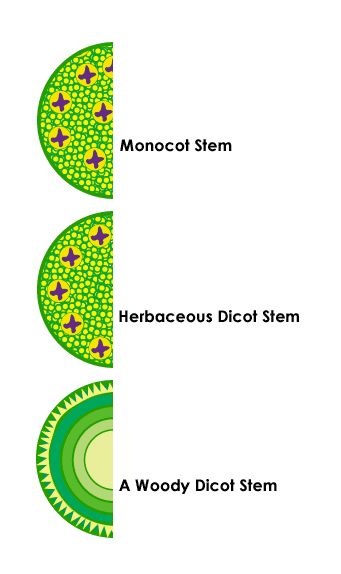Please wait while we process your payment
If you don't see it, please check your spam folder. Sometimes it can end up there.
If you don't see it, please check your spam folder. Sometimes it can end up there.
Please wait while we process your payment

By signing up you agree to our terms and privacy policy.
Don’t have an account? Subscribe now
Create Your Account
Sign up for your FREE 7-day trial
By signing up you agree to our terms and privacy policy.
Already have an account? Log in
Your Email
Choose Your Plan
Individual
Group Discount
Save over 50% with a SparkNotes PLUS Annual Plan!
 payment page
payment page
Purchasing SparkNotes PLUS for a group?
Get Annual Plans at a discount when you buy 2 or more!
Price
$24.99 $18.74 /subscription + tax
Subtotal $37.48 + tax
Save 25% on 2-49 accounts
Save 30% on 50-99 accounts
Want 100 or more? Contact us for a customized plan.
 payment page
payment page
Your Plan
Payment Details
Payment Summary
SparkNotes Plus
You'll be billed after your free trial ends.
7-Day Free Trial
Not Applicable
Renews July 17, 2025 July 10, 2025
Discounts (applied to next billing)
DUE NOW
US $0.00
SNPLUSROCKS20 | 20% Discount
This is not a valid promo code.
Discount Code (one code per order)
SparkNotes PLUS Annual Plan - Group Discount
Qty: 00
SparkNotes Plus subscription is $4.99/month or $24.99/year as selected above. The free trial period is the first 7 days of your subscription. TO CANCEL YOUR SUBSCRIPTION AND AVOID BEING CHARGED, YOU MUST CANCEL BEFORE THE END OF THE FREE TRIAL PERIOD. You may cancel your subscription on your Subscription and Billing page or contact Customer Support at custserv@bn.com. Your subscription will continue automatically once the free trial period is over. Free trial is available to new customers only.
Choose Your Plan
This site is protected by reCAPTCHA and the Google Privacy Policy and Terms of Service apply.
For the next 7 days, you'll have access to awesome PLUS stuff like AP English test prep, No Fear Shakespeare translations and audio, a note-taking tool, personalized dashboard, & much more!
You’ve successfully purchased a group discount. Your group members can use the joining link below to redeem their group membership. You'll also receive an email with the link.
Members will be prompted to log in or create an account to redeem their group membership.
Thanks for creating a SparkNotes account! Continue to start your free trial.
We're sorry, we could not create your account. SparkNotes PLUS is not available in your country. See what countries we’re in.
There was an error creating your account. Please check your payment details and try again.
Please wait while we process your payment

Your PLUS subscription has expired
Please wait while we process your payment
Please wait while we process your payment

Stem and Trunk
Plant stems function in various capacities, primarily in nutrient transport and physical support. The vascular system of plants, complete with xylem and phloem, fills both purposes. Stems, along with roots, also store food for the plant. Pith, a tissue that lies in the center of the stem (or, as it is called in trees, the trunk), is responsible for some nutrient storage as well.
The vascular system in the stem is continuous with that of the roots, providing an easy route for water and nutrients to flow throughout the plant body. The organization of vascular tissues is different for various types of plants--from the scattered vascular bundles (containing both xylem and phloem) of monocots to the more orderly ring formation found in dicots. This difference in the organization of the vascular tissues has implications for the way the plant grows. (For a general discussion of monocots and dicots, see Plant Classification, Monocots and Plant Classification, Dicots.)
In monocots, xylem and phloem are organized in vascular bundles scattered throughout the stem. As the plant grows, monocot stems generate new vascular bundles for the new tissue. Monocot stems in general possess a simpler arrangement than that found in dicots; the main elements of the stem are merely the vascular bundles and the pith (used for nutrient storage) that surrounds them.
The vascular system found in dicots is somewhat more complex than that found in monocots. In the dicot stem, the vascular bundles are arranged in a ring, with pith concentrated at the core of the stem, rather than being scattered throughout the plant interior. In each vascular bundle, the xylem and phloem are separated by a substance called vascular cambium. As the plant grows, existing bundles grow larger (rather than new vascular bundles being generated, as in monocots). The vascular cambium operates by producing new xylem and phloem cells, which in turn pushes the old cells outward and forces the bundle to grow.
Within the class of plants known as dicots, herbaceous dicots and woody dicots have different arrangements of vascular tissues. In herbaceous dicots (plants, mostly annuals, with soft, non-woody stems), vascular tissue remains in discrete bundles even at maturity. In contrast, when mature woody dicots (plants, mostly perennials, with woody stems) reach maturity, the vascular bundles join together to form continuous rings around the interior of the stem. In addition, woody dicots develop a lateral system of nutrient transport in which vessels called rays extend horizontally from the phloem to the pith, carrying nutrients to the pith for storage or to the phloem for dispersal.

In addition to distributing nutrients, vascular tissues also provide structural support. In fact, the material commonly known as "wood" is actually xylem. After a time, the xylem at the center of older trees (woody dicots) ceases to function in transport and takes on a purely supportive role; this nonfunctioning xylem is called heartwood. The newer xylem closer to the surface remains active in the vascular system, and is called sapwood.
Please wait while we process your payment

